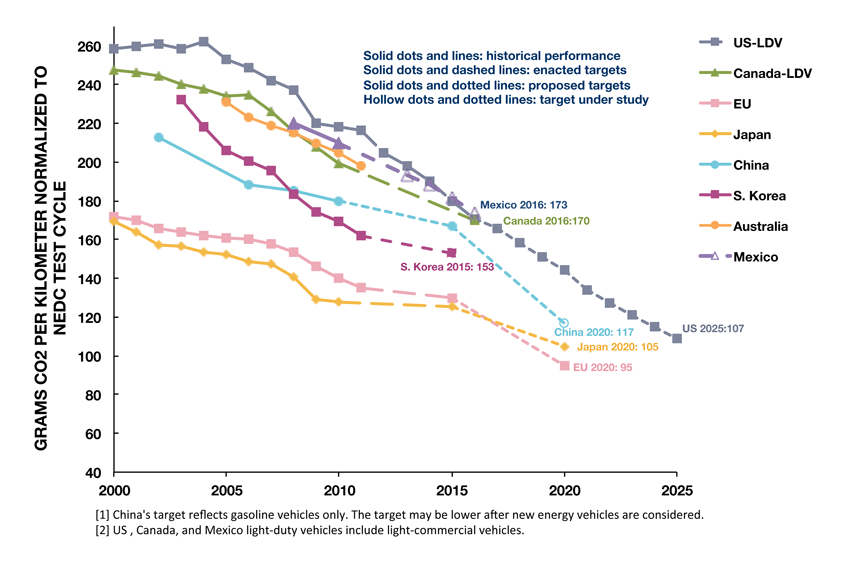Blog
Mexico's groundbreaking fuel economy standards
Hot on the heels of passing a landmark climate bill which promises a 30% reduction in greenhouse gases by 2030 from business as usual, the Mexican government is proposing its first real measure to meet that commitment: new fuel economy standards for cars (including SUVs and pickup trucks) that are harmonized with the U.S. and Canada. Not only will this be the only fuel efficiency standards in place in Latin America, it will be the first time that North America will truly harmonize around a single set of such standards: one set of test cycles, a uniform regulatory design, and the same timeframe and level of efficiency improvement required across the region. This dovetails nicely with automaker strategies for responding to dwindling profit margins by offering increasingly globalized products. Ford, for example, expects to move from 25 core platforms in 2009 to just 12 in 2013.
From a 2010 baseline, the U.S. standards require fleet average reductions in CO2 emissions of 20%, while the Mexico proposal would require only a 16% reduction in fleet average CO2 emissions. As with U.S. and Canadian standards, the proposal is based on vehicle size, but it is unlikely to provide any encouragement to sell either smaller or larger vehicles. Size-based standards have the advantage of ensuring that automakers are all pushed to improve efficiency, regardless of the mix of vehicles they sell. As in the rest of North America, cars and trucks are also subjected to different levels of stringency, and the Mexico proposal provides a little added flexibility by slightly reducing the stringency for each compared with the US standard. As a result, the 2016 average fuel economy in Mexico, Canada and the US is expected to be similar in 2016.
Vehicles sold in Mexico tend to be smaller (average footprint of 4.1 sq. m as opposed to 4.5 sq. m in the U.S.) and less powerful (approximately 25% lower than U.S. for MY2008). At the same time, the average fuel economy of new vehicles in Mexico is slightly higher (12.5 km/l for MY2010 as opposed to 12.1 km/l in the U.S.), which means that Mexico is starting out with higher efficiency than the U.S. and is expected to reduce fuel consumption at a slightly lower rate of 3.5% per year as compared with 4%. As a result, the manufacturers have less of a hurdle to overcome to meet the proposed standards.
